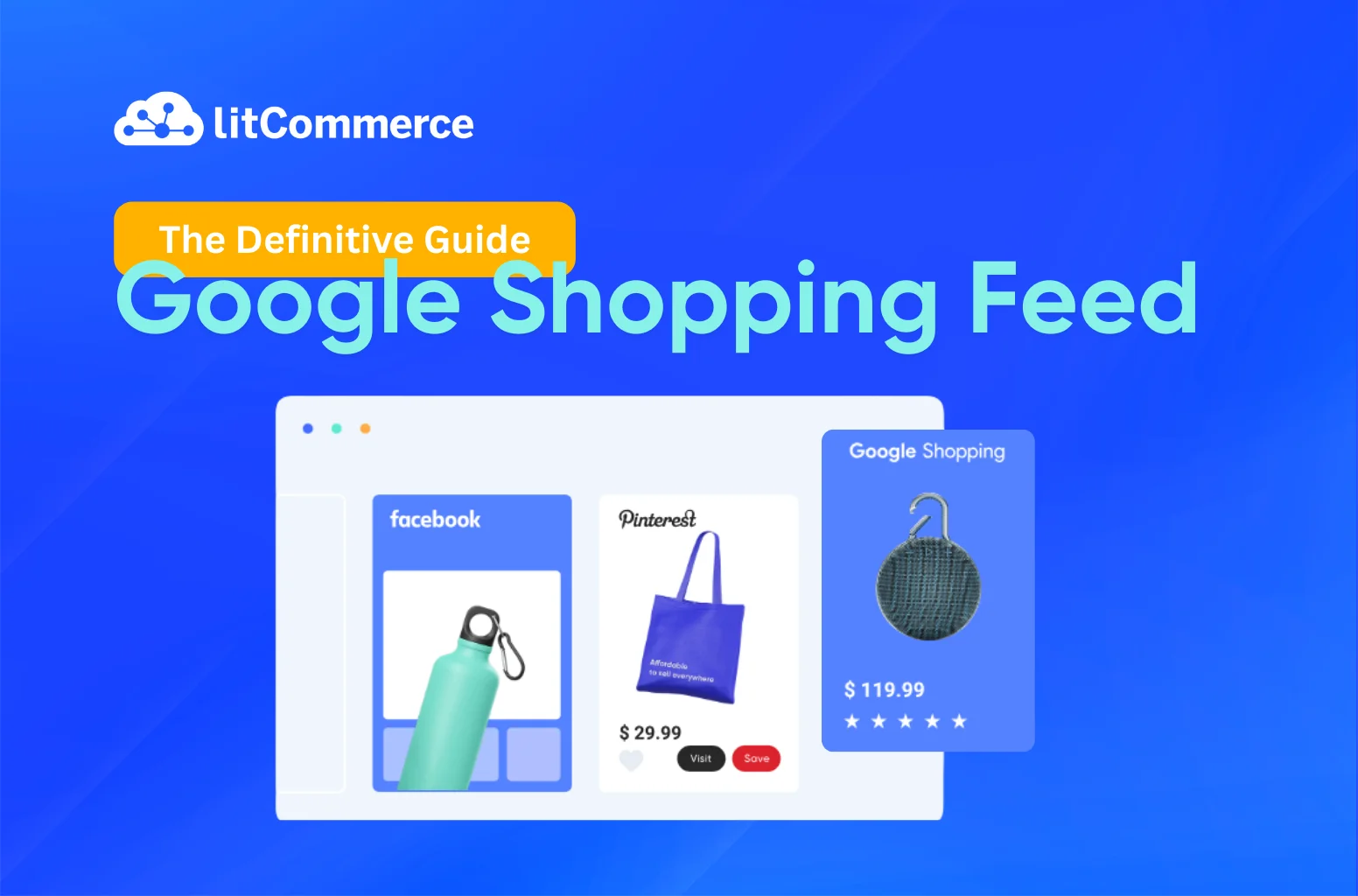Are you curious about the most effective and popular way to add products on Google Shopping? It’s using Google Shopping feed. A well-structured and optimized product feed is critical for success in Google Shopping campaigns. A feed also serves as the foundation for how products are displayed and matched with user searches, ultimately affecting visibility and sales performance.
In this article, we will help you thoroughly understand Google Shopping feed, from definitions to best tips to optimize. But before jumping into the details, here are some key takeaways:
- 7 types of Google Shopping feed serve a specific purpose and offer unique benefits.
- Retailers who include correct GTINs (Global Trade Item Numbers) in their product data have seen an average increase of 20% in clicks.
- Optimizing your Google Shopping Feed can lead to better performance, resulting in more clicks and customer engagement.
Let’s dig into each of the areas now!
What is Google Shopping Feed?
A Google Shopping Feed is a structured file with essential product details like title, price, and GTIN submitted to Google Merchant Center to display in Google Shopping and other Google services. “An optimized feed improves visibility and performance, directly impacting how products are displayed.”
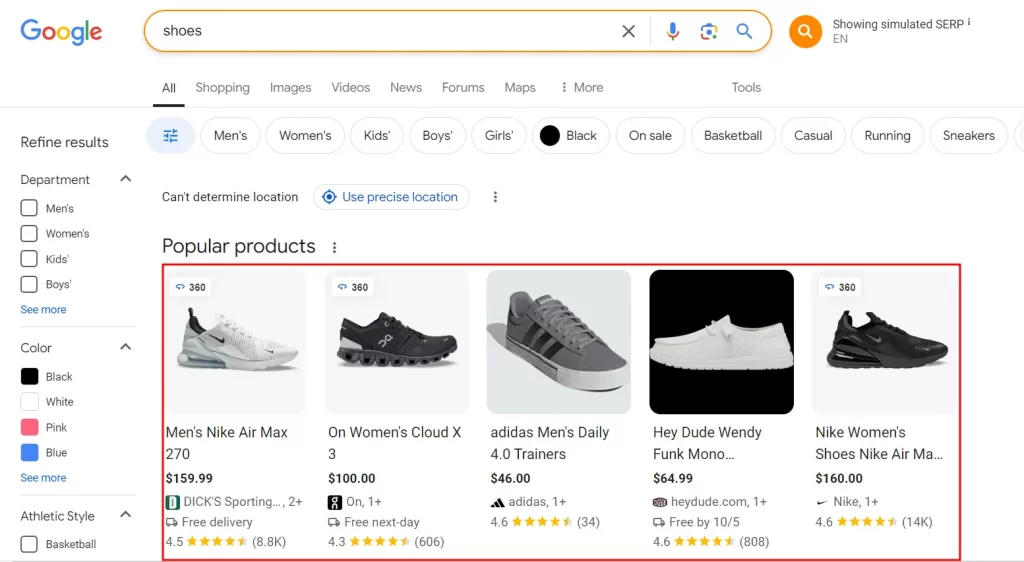
How Does Google Shopping Feed Work?
After discovering the definition of Google Shopping feed, here is how it works.
The product feed is uploaded to the Google Merchant Center, which serves as the hub for managing product listings. You can manually create product feeds in formats like CSV or TXT files using Google Sheets, then upload them directly through the Merchant Center interface.
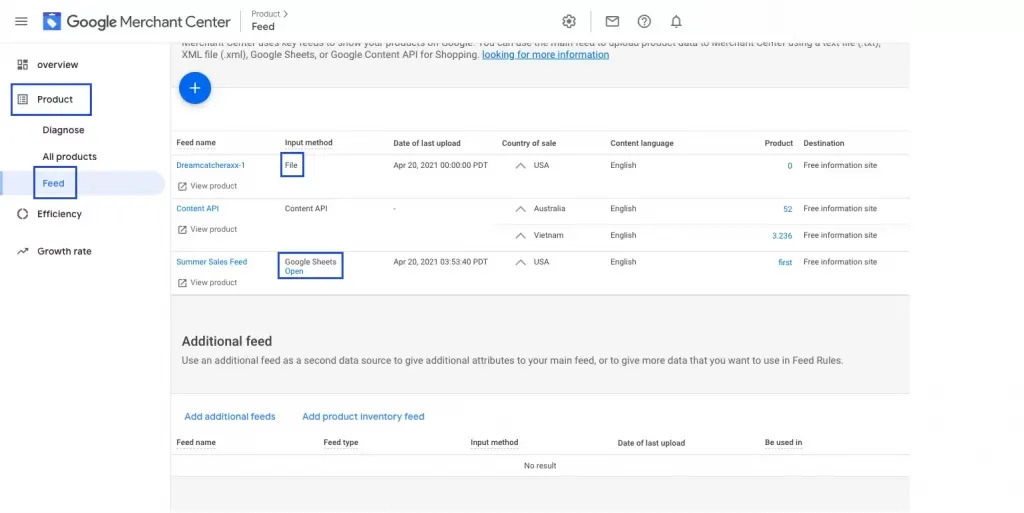
Moreover, this submission can be done manually or through automated methods, such as Content API for Shopping, or using a third-party application such as LitCommerce.
- Content API for Shopping directly integrates with Google Merchant Center via RESTful API, allowing for real-time data management.
- Third-party applications can integrate with various eCommerce platforms such as Shopify, WooCommerce, etc to manage feeds.
Because Google Shopping feed is dynamic, you need to regularly update feeds to reflect the changes in stock levels, prices, and other product details. This ensures customers see accurate and current information enhancing their overall shopping experience.
Once the feed is submitted and approved, products can appear in Google Shopping search results, and you can start running Google Shopping ads. When users search for products, Google uses the information in the feed to display relevant products, helping merchants reach a wider audience. In addition, Google Shopping feeds can seamlessly integrate with Google Ads, enabling businesses to promote their products effectively across various advertising formats.
Looking to improve your product visibility and increase your conversion rates? Check out these 11+ Google Shopping feed optimization tips!
Start making your first product feed with LitCommerce
Access over 2,000 pre-designed templates and customize them to fit each sales channel’s requirements, maximizing your product reach.
What Are Google Shopping Feed Attributes?
Google product data attributes or Google Shopping feed specifications are essential pieces of information that describe your products and are submitted to the Google Merchant Center. These attributes help populate product listings that appear in Google Shopping search results. Additionally, Google supports a wide range of attributes, which are categorized into three main types:
Types | Definitions | Attributes |
Required | These attributes are mandatory for all products submitted to the Google Merchant Center. If these attributes are missing, the product will not be eligible to serve in ads or free listings |
|
In-depends | Certain attributes may be required based on specific conditions, such as the type of product or the country where it is sold |
|
Optional Attributes | These attributes are not mandatory. Submitting optional attributes can help improve visibility and click-through rates |
|
How Many Types of Google Shopping Feed?
Different types of Google Shopping feed serve a specific purpose and offer unique benefits. So, sellers need to differentiate each feed option and choose the most suitable one to optimize its benefits. Below are the 7 essential types of Google Shopping feed:
- Google merchant center (primary) feed: This is the foundational feed that contains essential product information, including titles, descriptions, prices, and images. It is mandatory for listing products on Google Shopping and serves as the primary data source for Google Merchant Center. This kind of feed is suitable for every eCommerce seller in any category.
- Google merchant center supplemental feed: This feed supplements the primary feed by allowing merchants to add or update additional product information without altering the primary feed missing attributes, promotional details, or custom labels. This feed is suitable for retailers with large inventories.
- Google dynamic remarketing feed: This feed differs from other feeds in that it focuses on creating highly targeted ads based on user’s past interactions with your website or products. It fits with eCommerce businesses aiming to re-engage potential customers.
- Google local inventory feed: This feed enables retailers with physical stores to showcase their in-store inventory on Google, helping customers find products available nearby and driving foot traffic to brick-and-mortar locations. This feed is suitable for retailers with physical stores.
- Google promotions feed: This feed is a unique data feed designed specifically for managing and displaying promotions and offers, increasing the click-through rate (CTR) of ads. Sellers should use it if they are running special promotions or discounts.
- Product ratings feed/review feed: This feed showcases product ratings and reviews within Google Shopping ads, providing social proof that can influence purchasing decisions and enhance product appeal. Retailers who are seeking to enhance credibility through customer feedback should use this feed.
- Google manufacturer feed: This feed is designed specifically for manufacturers and brand owners, enabling them to submit product information to Google. This ensures consistent product details are maintained across various retailers.
How to Create a Google Shopping Feed?
Here are 4 steps to set up a Google Shopping feed:
Step 1: Set up your Google Merchant Center account
The first step you need to take is setting up your Merchant Center account. If you don’t already have a Google Merchant Center (GMC) account, sign up at the Google Merchant Center website.
Then, fill in your business details, including your website URL and business address. Verify your website to confirm ownership.
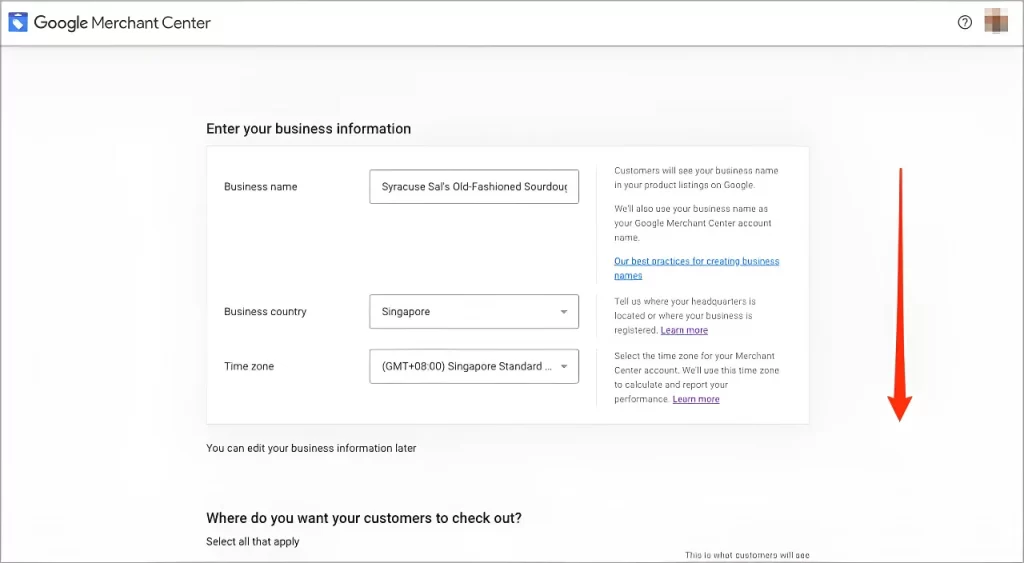
Step 2: Prepare your Google Shopping feed data
After having a Google Merchant Center account, to create a Google Shopping Feed, you need to prepare specific information about your products. The required attributes that are shown in the table above are crucial for ensuring your products are listed correctly on Google Shopping.
Notes: These are some required attributes that you have to prepare. Besides, each feed type may have unique requirements based on the platform’s specifications and the nature of your products. So, it’s essential to understand the different types of feeds available and the specific information required for each.
Step 3: Create your product feed
Once you’ve prepared your product feed data, you can create your feed file in these 3 ways:
- Use Google Sheets: You can create a product feed by manually using a spreadsheet. First, open Google Sheets and create a spreadsheet with columns for each required field example product ID, title, description, image URL, and availability. After populating the data, export it as a CSV file, and upload it to Google Merchant Center (GMC).
This method is time-consuming and prone to errors, but it’s also the most flexible, free, and customizable option. Below is a Google Shopping feed example:
id | title | description | link | impage_link | price |
SK1 | Classic White T-shirt | A comfortable and stylish classic white T-shirt made from 100% cotton. Perfect for everyday wear. | https://www.example.com/classic-white-tshirt | ttps://www.example.com/images/classic-white-tshirt.jpg | 19.9 USD |
SK2 | Logo Rex T-shirt - Blue | This vibrant red T-shirt features the Logo Rex design, made from soft cotton fabric. Ideal for casual outings. | https://www.example. com/logo-rex-blue-tshirt | ttps://www.example.com/images/logo-rex-blue-tshirt.jpg | 25 USA |
SK3 | Logo Rex T-shirt - Red | Experience the iconic style of Logo Rex with our classic red t-shirt. Perfect for casual wear or everyday adventures, this t-shirt is a timeless addition to your wardrobe | https://www.example.com/logo-rex-red-tshirt | ttps://www.example.com/images/logo-rex-red-tshirt.jpg | 27 USA |
- Use eCommerce platforms: Besides, if you are using an eCommerce platform such as Shopify, WooCommerce, or Magento, you can easily create a product feed by installing a Google Shopping app or plugin. These plugins will automatically generate a product feed for you, based on the information you have added to your store. This option is convenient and easy, but it may not offer as much control over your feed as manual creation.
- Use product feed management tools: Some Google Shopping feed management tools streamline the creation and management of product feeds. These tools integrate with eCommerce platforms or websites to automatically generate product feeds for sellers.
Whether you choose to use a spreadsheet, an eCommerce platform, or a product feed management tool, there’s a solution to fit your needs. These tools make it simple to create and optimize your product feed, helping you reach more potential customers through Google Shopping.
Seamlessly create and manage your product feed
Get your products listed quicker with automated feed management, reducing manual work and delays using LitCommerce
Step 4: Upload Your Feed to Google Merchant Center
Finally, once your feed is created, it’s time to upload it. Here’s the guide:
- In your Merchant Center account, on the left, click Products.
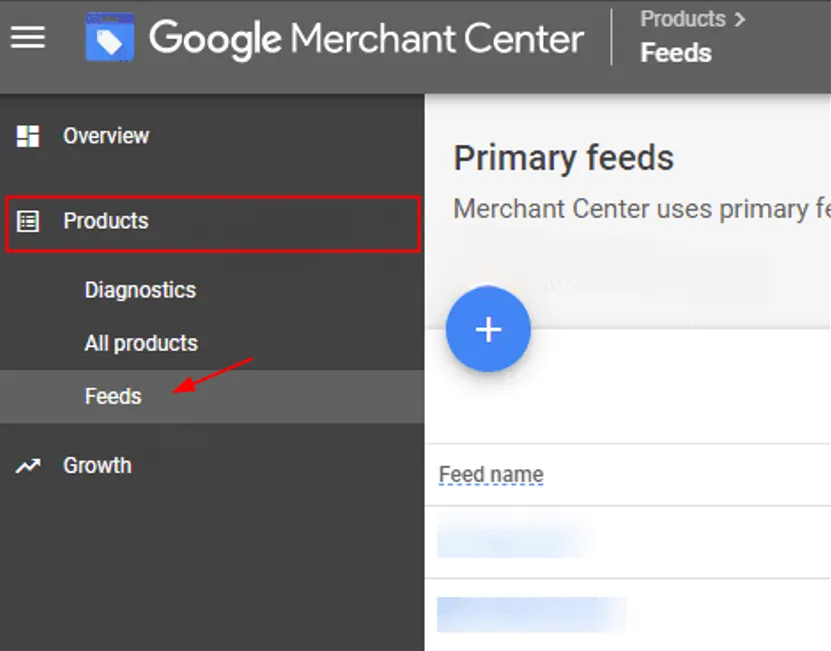
- Click on “Feeds”, then choose button “+” under the “Primary feeds” section.

- Select “Google Sheets” as your input method and connect your spreadsheet.
- Once connected, you can schedule automatic updates if needed.
Must-try Tips for Google Shopping Feed Optimization
Google Shopping feed are the backbone of Google Shopping campaigns, providing the necessary data to populate product listings and ads. So, optimizing Google Shopping feed gives you better performance, which means more clicks and more reach for your stores. Let’s dive into how to optimize your Google Shopping feed:
1. Keyword optimization
Using tools such as Google Keyword Planner to identify the terms potential customers use when searching for products similar to yours. Then, use primary keywords in your product titles and descriptions to increase search relevance.
You should place the most relevant keywords at the beginning of your title. Because Google prioritizes the first few words in a title when determining relevance to a user’s search, this helps ensure that your product is found easily and avoids truncation in search results.
2. Use high-quality and multiple images
High-quality product images are often the first interaction customers have with a product. According to studies, 93% of consumers consider visual appearance a key factor in their purchasing decisions. A compelling and detailing images can capture attention and encourage potential buyers to explore further.
Ensure that all product photos are at least 800×800 pixels in resolution, with no watermarks, text overlays, or promotional elements in the images. Also, the product fills 75% to 90% of the image space.
3. Maintain up-to-date price and availability
Outdated or incorrect listing can frustrate customers, leading to negative reviews or missed sales opportunities. So, make sure that you keep your listings accurate and competitive by regularly updating inventory, pricing, and promotions.
In addition, regular updates ensure that inventory levels and prices are accurate across all feeds to avoid customer dissatisfaction and maintain compliance with advertising policies.
Google Shopping Feed: FAQs
A product feed is a structured file containing all the necessary information about products that an online retailer wants to showcase on platforms like Google Shopping. The feed allows Google to understand and display the products accurately in response to relevant search queries. In your Merchant Center account, go to the left-hand navigation and click Products -> Feeds -> “+” button under the “Primary feeds” section. Then enter the required product feed information. Google Shopping feed management refers to the process of creating, optimizing, and maintaining product feeds for Google Merchant Center. This involves ensuring that product data is accurate, up-to-date, and compliant with Google’s requirements. The recommended length for a Google product feed description is between 500 to 1,000 characters. However, it’s important to prioritize clarity and relevance over length.
Optimize Your Google Shopping Feed to Maximize Product Visibility and Sales!
Google Shopping Feed is the secret weapon for the seller to increase their sales performance and revenue. By creating and submitting Google Shopping feed, you can quickly get your products listed on various Google surfaces platforms reducing time to market.
Discover more about Google shopping and other channels by delving into our Retail Blog or contact us whenever you need guidance. LitCommerce is glad to assist you anytime you need us. Lastly, don’t forget to join our Facebook community to stay ahead with the latest eCommerce trends and effective strategies

